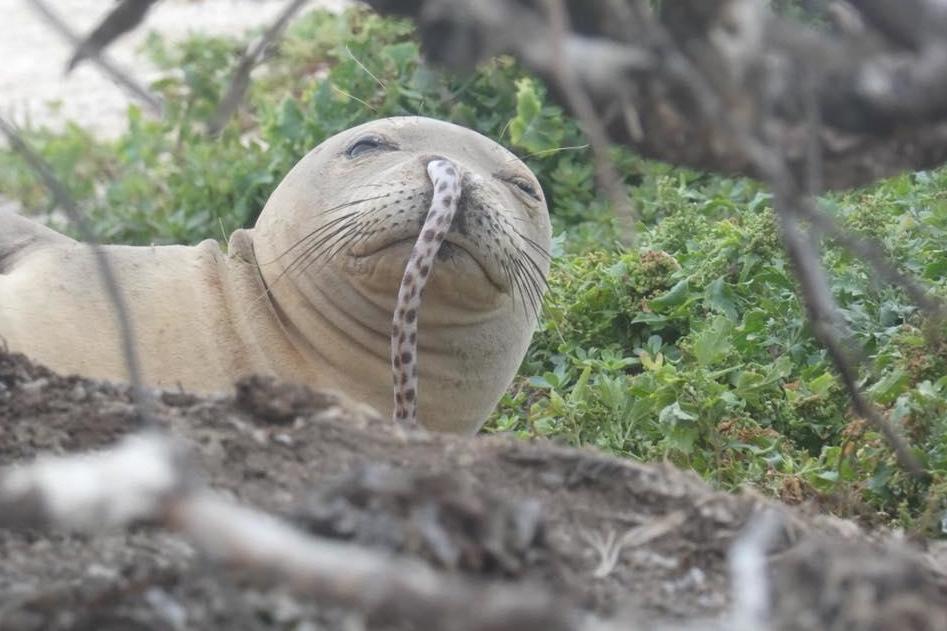Endangered Hawaiian monk seals baffle scientists by getting eels stuck in their noses
The seals are typically fine once the eels have been removed

Your support helps us to tell the story
From reproductive rights to climate change to Big Tech, The Independent is on the ground when the story is developing. Whether it's investigating the financials of Elon Musk's pro-Trump PAC or producing our latest documentary, 'The A Word', which shines a light on the American women fighting for reproductive rights, we know how important it is to parse out the facts from the messaging.
At such a critical moment in US history, we need reporters on the ground. Your donation allows us to keep sending journalists to speak to both sides of the story.
The Independent is trusted by Americans across the entire political spectrum. And unlike many other quality news outlets, we choose not to lock Americans out of our reporting and analysis with paywalls. We believe quality journalism should be available to everyone, paid for by those who can afford it.
Your support makes all the difference.The behaviour of the endangered Hawaiian monk seal has researchers confused - after multiple incidents involving the creatures getting eels stuck up their noses.
In a recent photo shared on Facebook by the National Oceanic and Atmospheric Administration’s (NOAA) Hawaiian Monk Seal Research Program (HMSRP), a Hawaiian monk seal lies against green foliage with a white-and-brown spotted eel hanging from its nostril.
“Mondays… it might not have been a good one for you but it had to be better than an eel in your nose,” the HMSRP captioned the photo.
The unlucky situation led many to raise questions on Facebook, where the photo has been shared more than 1,200 times.
But, according to the HMSRP, the incident is just the latest in a phenomenon that was first recorded in 2016 - and researchers don’t actually know why it keeps happening.
On the NOAA’s website, researchers explained that although they have been monitoring the behaviour of the endangered Hawaiian monk seals for over 40 years, they are not sure why the juvenile seals have all of a sudden started getting eels stuck in their noses.
“We don’t know if this is just some strange statistical anomaly or if we will see more eels in seals in the future,” the program wrote.
However, the scientists did hypothesise possible explanations for the slippery situations.
One possible reason may be the way Hawaiian monk seals forage for food.
According to the NOAA, the seals forage by “shoving their mouth and nose into the crevasses of coral reefs, under rocks, or into the sand,” and are often looking for prey like eels - which may try to defend themselves.
The situation may also arise as a result of a meal not being properly digested - which may then be regurgitated through the nose.
“We might never know,” the researchers wrote.
Fortunately, in each instance, the eels were removed and the seals were unharmed.
Despite the successful removals, Charles Littnan, the HMSRP’s lead scientist, says he wishes the seals would stop finding themselves in the tricky situations - which he suggests may have another explanation.
“It almost does feel like one of those teenage trends that happen,” Mr Littnan told The Washington Post. “One juvenile seal did this very stupid thing and now the others are trying to mimic it.”
“I would gently plead for them to stop,” he said - as there is the possibility that the eels could pose a health risk to the seals.
In addition to infections, the “really quite long eels” can hinder the seals’ ability to dive for food - as seals typically close their nostrils underwater.
As for the eels, they “did not make it,” according to the HMSRP.
Join our commenting forum
Join thought-provoking conversations, follow other Independent readers and see their replies
Comments